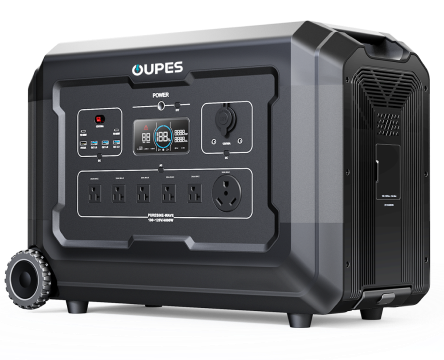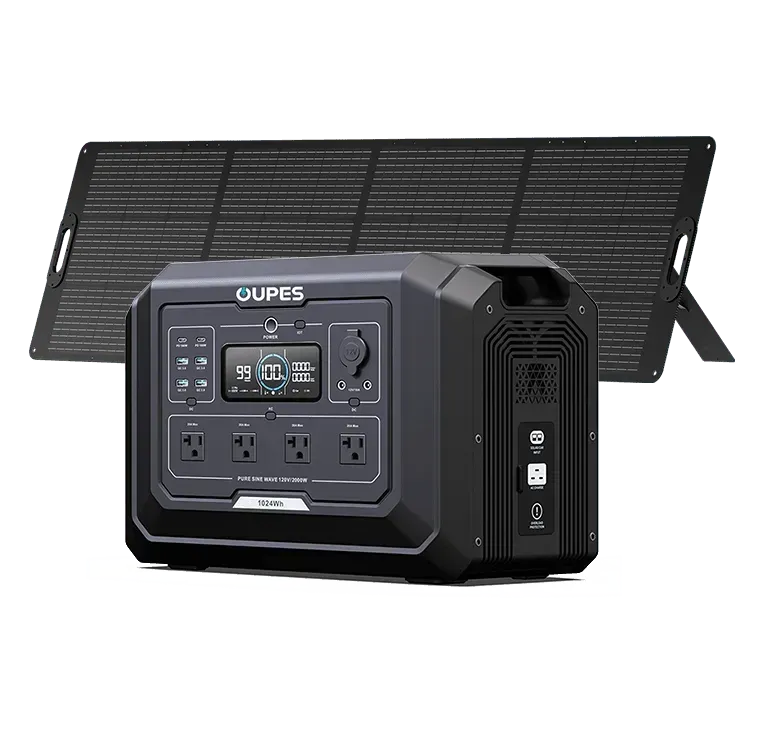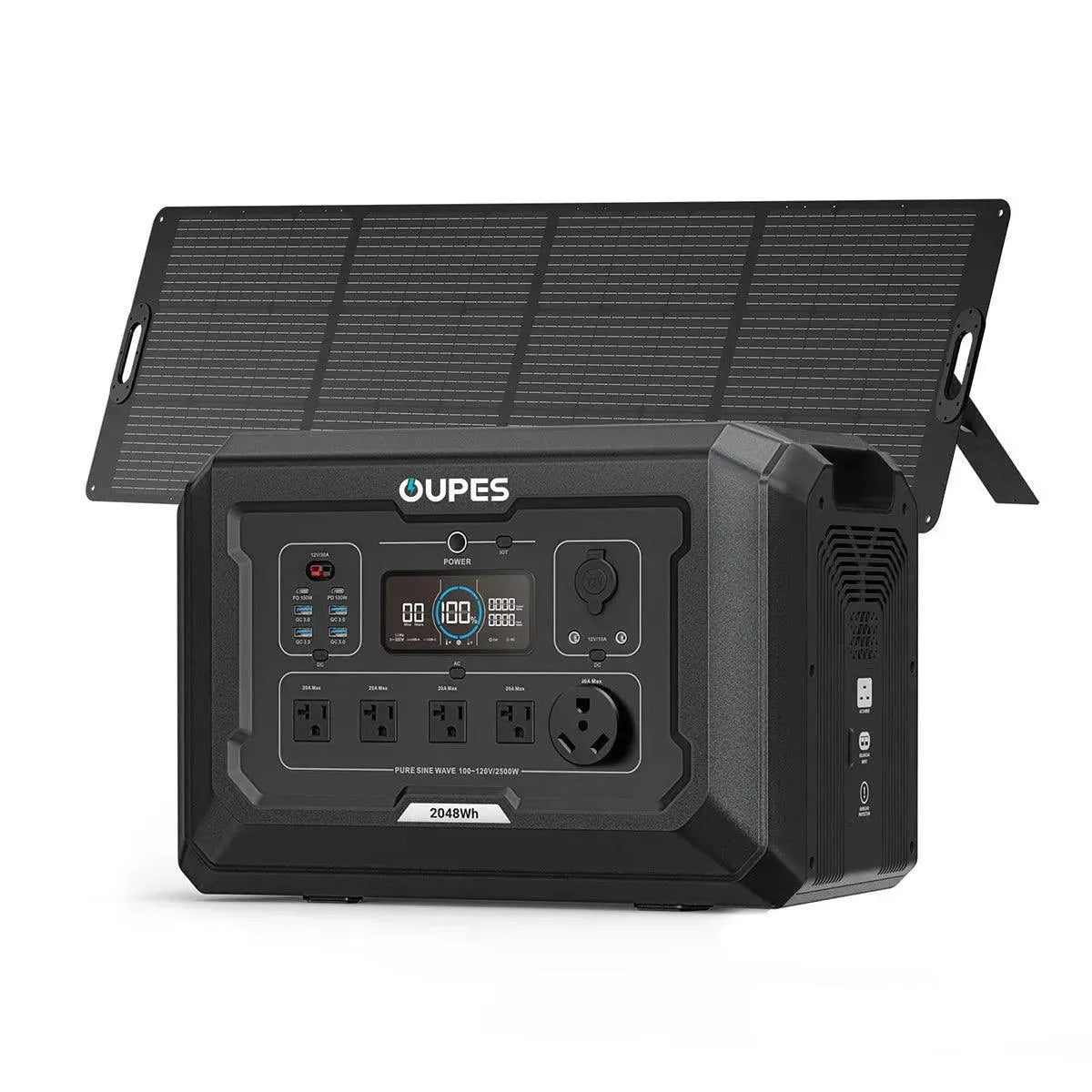
Imagine being stuck in the middle of nowhere with a dead car battery—no service stations nearby and your phone’s about to die. What if you could harness the power of the sun to bring your vehicle back to life?
Charging a car battery using solar panels isn’t just possible—it’s practical, eco-friendly, and essential for anyone who enjoys off-grid adventures or wants to be prepared for emergencies. In this detailed guide, we’ll walk you through every step, highlight the gear you’ll need, and show you how OUPES portable power stations can make solar charging easier than ever.
Understanding How Solar Charging Works for Car Batteries
Solar charging a car battery relies on converting sunlight into usable electrical energy. This process involves several components: solar panels, charge controllers, and a means of storing or directly utilizing the electricity—typically a car battery or portable power station.
When sunlight hits the photovoltaic cells on a solar panel, it generates direct current (DC) electricity. However, the energy output from a solar panel can vary due to weather, panel efficiency, and angle to the sun. That’s why a charge controller is essential; it regulates the voltage and current coming from the solar panels to prevent overcharging or damaging your car battery.
In many cases, pairing solar panels with a portable power station, like the OUPES Mega 2 Power Station (2500W, 2048Wh), provides an optimal solution. This device can be charged using solar input and then used to recharge your car battery when needed, offering flexibility and safety. It also includes multiple output ports that can handle 12V car charging directly, reducing setup complexity.
Keep in mind that car batteries typically operate at 12 volts and require a steady charge of about 10 to 20 amps to recharge fully. Therefore, your solar setup needs to be capable of delivering this consistently. That’s where high-efficiency solar panels and robust storage solutions like the OUPES lineup make a noticeable difference.
Essential Equipment You’ll Need
Before attempting to charge your car battery with solar panels, gathering the right gear is crucial. Here’s what you’ll typically need:
1. Solar Panels: Choose high-efficiency, portable solar panels. Depending on the battery capacity and your needs, panels ranging from 100W to 300W are common. Foldable or suitcase-style panels are great for easy transport.
2. Charge Controller: A solar charge controller prevents overcharging and protects the car battery from voltage fluctuations. MPPT (Maximum Power Point Tracking) controllers are recommended over PWM (Pulse Width Modulation) for their efficiency.
3. Deep Cycle or Portable Power Station: Devices like the OUPES Exodus 1200 Portable Power Station (1200W, 992Wh) or OUPES Titan 3 (3600W, 3072Wh) can store solar energy and safely recharge a car battery. These units offer regulated DC outputs suitable for automotive use.
4. Inverter (Optional): If you plan to use AC devices during your solar charging setup, a pure sine wave inverter can convert DC to AC power safely.
5. Battery Cables and Connectors: Use quality alligator clips or SAE connectors to link the power station or controller to your car battery. Double-check the polarity (+/-) before connecting.
All these tools work together to create a safe and efficient solar charging ecosystem. Investing in a high-quality power station like those from OUPES not only simplifies the process but ensures longevity and reliability for all your energy needs.
Step-by-Step Instructions for Charging Your Car Battery
Now that you understand the components, here’s how to actually charge your car battery using solar energy:
Step 1: Choose Your Setup Location
Place your solar panels in a location with maximum sun exposure, ideally facing south (in the Northern Hemisphere). Ensure the area is dry, flat, and safe from traffic or footpaths.
Step 2: Connect the Charge Controller
Attach the solar panels to your charge controller. Always connect the controller to the battery before plugging in the solar panels to avoid voltage spikes that could damage the controller.
Step 3: Link the Controller to the Car Battery or Power Station
Use appropriate cables to connect the controller to your car battery terminals. Alternatively, link it to a portable power station like the OUPES Mega 3 Power Station (3600W, 3072Wh), which can then safely recharge your car battery through a 12V car outlet or DC adapter.
Step 4: Monitor the Charge
Keep an eye on the voltage and current using the controller’s display or the power station’s interface. Most 12V car batteries are fully charged at around 12.6 to 12.8 volts. Avoid going above 14.4 volts unless specified by the battery manufacturer.
Step 5: Disconnect Safely
Once the battery is fully charged, disconnect the solar panels first, then the controller, and finally the battery. This order prevents electrical damage or short-circuiting.
This process typically takes 4 to 8 hours depending on sunlight and battery capacity. Using a high-capacity power station like the OUPES Mega 5 (4000W, 5040Wh) allows you to pre-charge the station with solar panels and then use it multiple times, providing continuous readiness for vehicle emergencies or extended trips.
Advantages of Using a Solar Setup for Car Batteries
Using solar energy to charge a car battery offers numerous benefits that go beyond environmental friendliness.
Portability: With compact solar panels and portable power stations, you can recharge your car battery from virtually anywhere—no grid required. This is a lifesaver during camping, off-roading, or rural travel.
Cost Savings: After the initial investment, the energy harvested from the sun is completely free. You avoid the cost of towing services or new batteries caused by over-discharge.
Eco-Friendly Power: Solar power generates no emissions, making it the most sustainable option available for battery recharging.
Multi-Use Capability: Portable power stations like the OUPES Mega 1 or OUPES Exodus 1500 not only charge car batteries but also run appliances, charge phones, power lights, and more.
Reliability in Emergencies: A robust solar power setup provides backup power in the event of a natural disaster or blackout, keeping your vehicle functional and devices charged.
For outdoor enthusiasts or anyone in remote locations, solar charging with devices like the OUPES Exodus 600 Plus (512Wh) ensures peace of mind when traditional power sources aren’t available.
Common Mistakes to Avoid When Charging with Solar Panels
While the process is straightforward, several mistakes can hinder efficiency or damage your equipment. Here's what to avoid:
Incorrect Panel Angle: Always angle your panels to maximize sunlight. Adjust seasonally or throughout the day if possible for optimal output.
Skipping the Charge Controller: Directly connecting solar panels to your battery without a charge controller can lead to overcharging or permanent damage.
Poor Cable Quality: Using thin or low-quality cables leads to voltage drops and overheating. Always use cables rated for the intended current.
Leaving Equipment Exposed: While many components are weather-resistant, it's best to use protective covers or enclosures to avoid water or dust ingress—especially when using high-end products like OUPES power stations.
Wrong Polarity: Double-check all positive and negative terminals before connecting. Reversed polarity can cause short circuits or damage to your battery or devices.
By staying vigilant and informed, you’ll protect your investment and get the most out of your solar car battery charging setup.
Here’s a quick comparison of three suitable OUPES models:
| Model | Output Power | Battery Capacity | Best Use |
|---|---|---|---|
| OUPES Exodus 1200 | 1200W | 992Wh | Compact setups, car charging, electronics |
| OUPES Mega 2 | 2500W | 2048Wh | Mid-size vehicles, full recharge capacity |
| OUPES Titan 3 | 3600W | 3072Wh | Long trips, home backup, multiple charges |
Conclusion
Charging a car battery with solar panels is not only feasible but smart, especially for travelers, off-grid adventurers, or those who value energy independence. By investing in the right gear, especially reliable portable power stations like those from OUPES, you ensure you’re never left stranded.
With the right setup, you can harness the sun’s energy anytime, anywhere—keeping your car, devices, and even your home powered when it matters most. Whether you’re planning your next road trip or prepping for emergencies, OUPES has a solution tailored to your power needs.




























